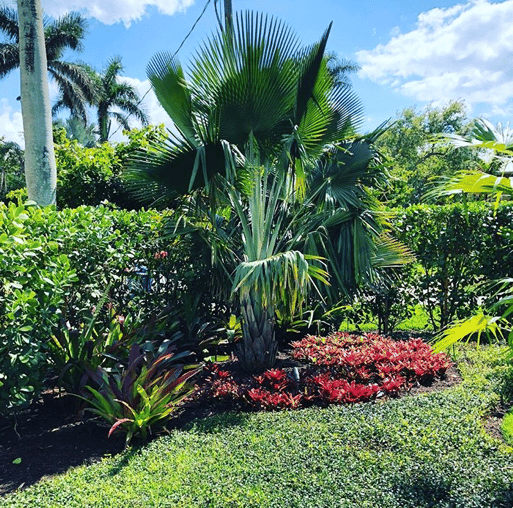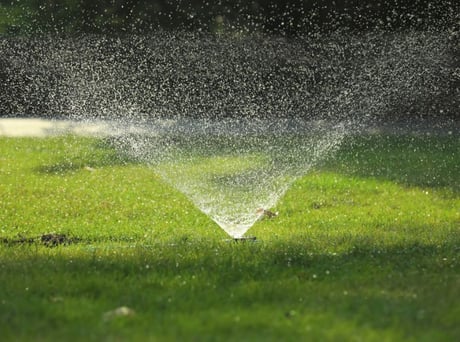
Home / Here on Earth / Spring Cleaning for Florida Landscapes
Spring is known for planting and regrowth, but it does not just end there. With a new season approaching and new plants or regrowth taking place, cleaning up the landscape and garden is equally important, especially in Florida. Refreshing your landscape with spring cleanup is crucial to make your landscape looking attractive and stay healthy for years to come.
Let's look at some of the basic spring cleanup instructions that are mentioned by the experts of Down To Earth so that you can attend to and care for your Florida-friendly landscape.
Pruning

You should consider pruning any cold-damaged foliage and/or branches after the danger of frost is over in the area. When you are at it, understand that this is the best time to check your shrubs for overall shape as well. While cutting back to restore extensive damage and removing any branches, it is also crucial and helpful for the health of your landscape to inspect the overall size and shape of your plants. This is done by removing any discolored foliage from your garden that has aged, is dead, or is unsightly.
If you have crape myrtles in your yard, pruning them using the right method, at the right point, and at the correct time can encourage way more blooms to appear. However, incorrect pruning often takes place by novice gardeners. Down To Earth recommends hiring professionals for the pruning job since they have the right knowledge on how to prune plants or crepe myrtles, for that matter.
Mulch
In the Spring season, with flowers blooming and trees growing and reproducing when most areas become more temperate, it is the perfect time to evaluate the organic mulch in your gardens and plant beds.
To start with, you can break up any old compacted mulch. You must also rake away the mulch set around the center of all plants. Bear in mind that the ideal depth of organic mulch should be around 2 to 3 inches.
While top-dressing your old mulch with a fresh one, you should be careful enough not to pile up the mulch against the plant itself since it can lead to a frequent occurrence of plant disease and pests. Too much mulch or leaf accumulation below and near large trees can damage them.
Fertilizing
Similar to mulching, even proper fertilization is also critical for the health of your plants and landscape. Florida-friendly landscaping depicts the appropriate use of landscape fertilizers to ensure a healthy spring cleanup and correct use of natural resources.
Examining the plants and trees on your lawn will give you an idea about the thriving shrubs and plants in your garden that won't need routine fertilizing. Also, for your turfgrass, consider following instructions regarding the particular variety you have while refraining from using too much fertilizer.
Usually, the soil in Florida is rich in phosphate. At the same time, people also feel that Florida soil is nutrient-poor. Well, the soil will vary in the number of nutrients they comprise. It is recommended the use of fertilizers labeled as "slow" or "controlled" release that comes with slow-release benefits where you can prevent excess nutrients from leaving your yard.
 Irrigation
Irrigation
After inspecting your yard or lawn for the above-mentioned methods of Spring cleanup, you can also use this opportunity as a perfect time to examine all the automatic irrigation systems. During the inspection, check the sprinkler heads if they are broken or aren't functioning properly. Automatic irrigation systems can also create issues such as reset of controllers to a different schedule or problems that can lead to overwatering and/or underwatering.
Inspections and the above-mentioned methods for your landscape with intense spring cleanup effort can render a healthy and aesthetically pleasing landscape.
Basic Spring Cleanup Tips for Florida Landscape
Most property managers or owners are not familiar with the right methods of Spring cleanup, and then there are others who don't know where to start.
Here is a list to provide some of the easy steps and valuable instructions for novice gardeners or landscapers to follow:
- Consider researching the plants or flowers in advance that you want to plant to replace the damaged ones. Choose the plants or turfgrass that will complement your yard in the future but also bodes well with your soil fertility.
- After the winter months are over, take some time to prune back all the damaged plants. Avoid digging the dormant plants or branches out of the ground. As the temperature gets warm, they will eventually come back.
- Pruning also comes with visible mulched areas in your landscape. This is the time to remove any or all weeds and nourish the area with mulch. However, refrain from using too much mulch to maintain a proper depth of 2 to 3 inches.
- Routine or periodic maintenance and basic repairs must be done to ensure a properly functioning system regarding irrigation or any other device, for that matter.
- Check if your yard or lawn is receiving adequate irrigation.
- Overwatering and underwatering are also something that can make or break your landscape. Hence, calibrating your sprinkler system is crucial. This involves the applied water being measured and then applying the correct amount after making necessary adjustments.
- During the Spring cleanup, do not forget about the bird feeders and birdbaths in your backyard. When the Spring season is around, consider cleaning them out and refilling them.
Installing new plants and pollinators, growing vegetables, and adding a seating area to enjoy soothing environments are achievable if you plan the landscaping enhancements or landscaping installations well while incorporating the principles of Florida-friendly landscaping to improve the quality of your lawn. Contact Down To Earth Landscape & Irrigation today to engage with our experts and enjoy our exceptional landscape and irrigation services.
